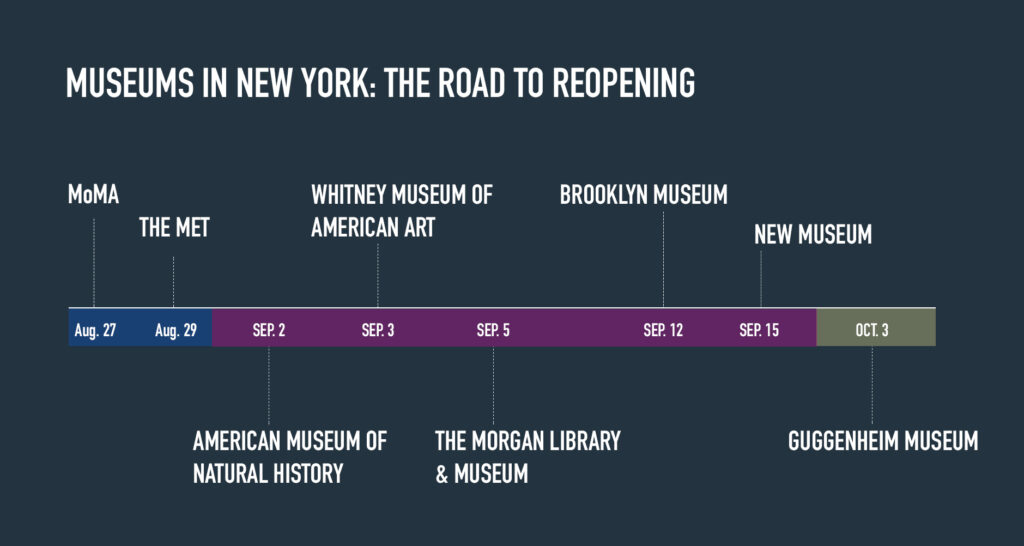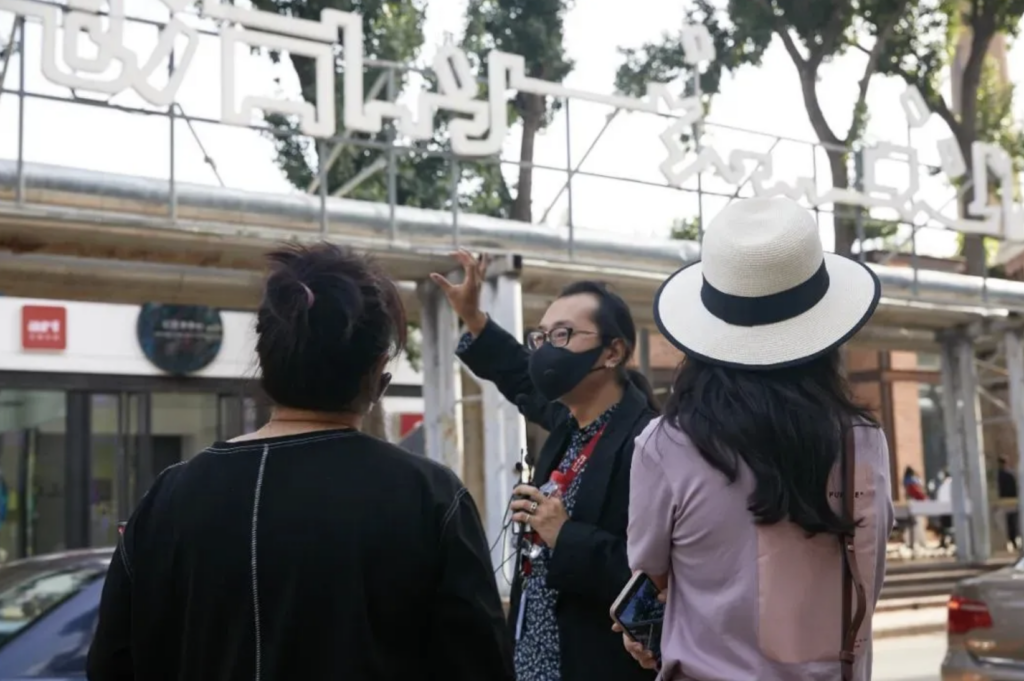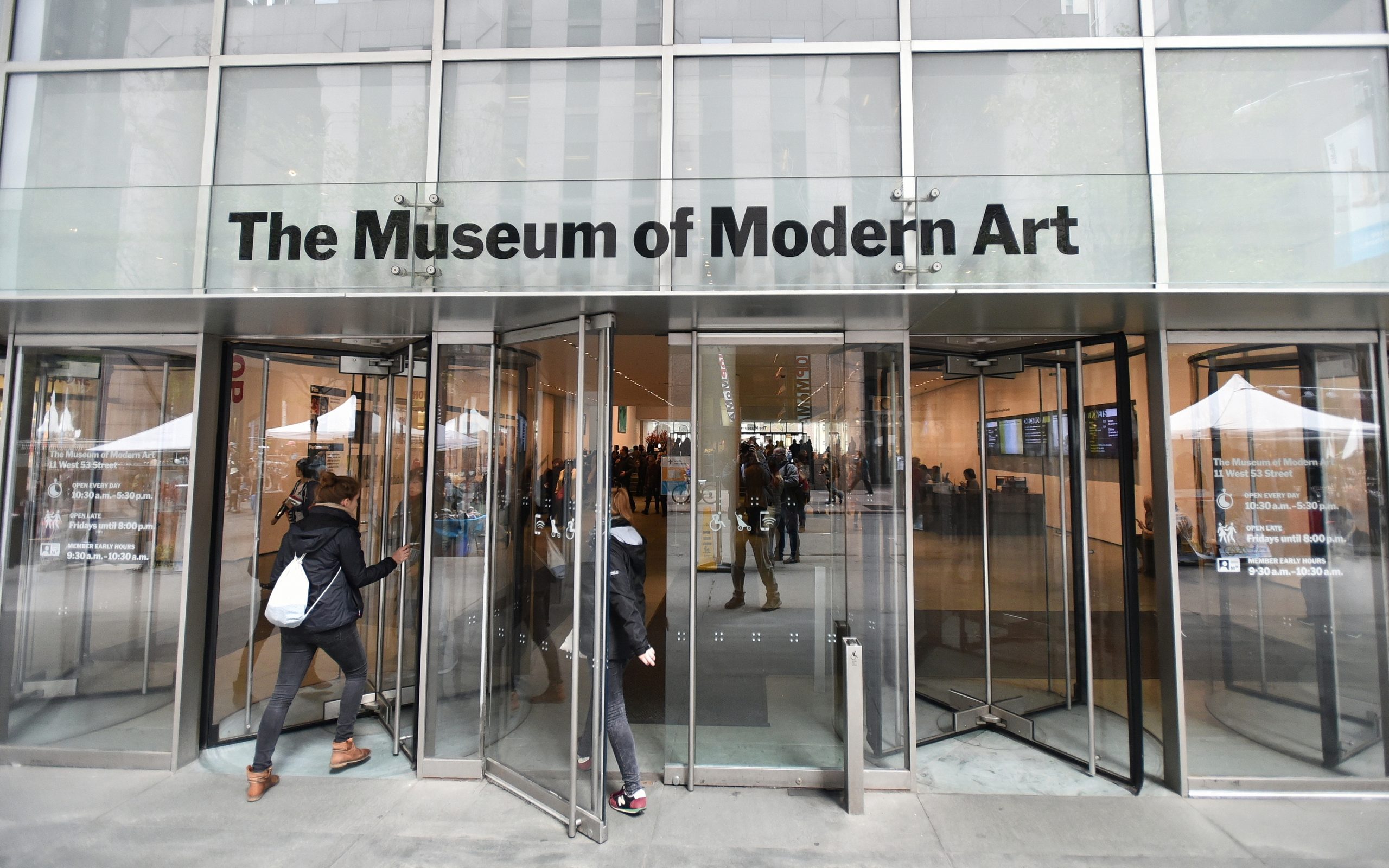New York may be the city that never sleeps, but its cultural life has been in a coronavirus-induced hibernation since March.
The digital engagements uploaded in the wake of lockdown evidenced the swift-thinking creativity of the institutions that comprise the city’s rich cultural tapestry — but they remain stopgap measures.
Standing before the sweeping wall of Monet’s Water Lilies at MoMA or delving into the stark realities of 19th century New York at the Tenement Museum remain irreplicable experiences.
Governor Andrew M. Cuomo has given the green light and from August 24 New Yorkers began visiting their favorite cultural institutions. In China, museums have been welcoming back visitors since May and here JT outlines the conditions of cultural reopenings and the lessons provided by Mainland institutions.

The road to reopening. Image: Peter Huang
How are New York museums reopening?
Museums must comply with state rules including capping visitation at 25 percent, introducing timed ticketing, controlling visitor flow, and mandating face coverings. In addition, some are conducting visitor temperature checks on arrival, closing smaller galleries, and removing furniture to maximize space.
These efforts are being coordinated through a task force of city museums that collaborated over safe and effective reopening strategies, notably, training staff to enforce social distancing and deescalate potentially unruly visitors.
Reopening amid a global pandemic entails more than merely adopting new health measures. It means accommodating for a new visitor. The Met is offering free valet bicycle parking (disinfected upon arrival) for those who continue to avoid public transport, the Brooklyn Museum is extending its outdoor art and film programming, and MoMA is offering free admission for the first month of reopening through its partnership with UNIQLO.
Reopening lessons from Chinese museums
When it came to reopening under new health and safety regulations, Chinese museums were aided by clear guidelines, the Culture and Tourism Green Code (文旅绿码), a government app that assesses visitor health and streamlines cultural bookings, and a preexisting culture of mask wearing.
But in terms of navigating a transformed cultural landscape, maintaining engagement, and generating revenue, these organizations offer valuable lessons.
Prepare to Reopen and Reclose
A month after Beijing’s cultural life tentatively restarted, a second coronavirus wave hit the Chinese capital. Although many institutions remained open, including those within the city’s vibrant 798 Arts District, some opted to close including Minsheng Art Museum and X Museum.
Planning for the possibility of rolling openings and closings is essential.

Beijing 798 Arts District. Image: Shutterstock
Rethink Ticketing
Forced closure by coronavirus was a heavy burden for cultural organizations irrespective of size or geography. For Beijing’s X Museum, however, it cancelled plans that were years in the making to launch and introduce itself as the capital’s foremost space for contemporary Chinese artists.
The rescheduled grand opening introduced four smart ticketing promotions; it committed to offering doctors and nurses half-price tickets until 2025, partnered with Net-a-Porter for a dual membership program, offered a 10 percent discount for early-bird tickets, and a special rideshare discount for users following the museum’s WeChat Account.

X Museum introduced four smart ticketing promotions for its rescheduled grand opening. Image: X Museum
Integrate Online and Offline Engagement
Chinese cultural institutions pivoted seamlessly to live streaming under lockdown and they fused real time broadcasts with in-person visitation once they reopened in early May.
The tone was set when cultural institutions across the country held curator-led live streams for International Museum Day on May 18.
Gallery Weekend Beijing, the capital’s leading art fair, took the strategy a step further through a successful partnership with video platform Kuaishou and averaged 160,000 views per event.
“Considering the travel limitations for international audiences, we have made our best efforts to develop a variety of digital initiatives,” said Director Amber Wang in a press release.

Curator Yang working as docent.
Additional reporting from Jiayi Li



